MAKING
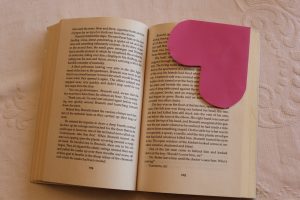

SUPER EASY, SUPER FAST BOOKMARKS. I read a lot and I’m often searching for a bookmark. I have so many but I still misplace them. I read mostly books from the library and the one I’m reading at the moment suggests bookmarks were few and few between in the previous readers life, too, as annoyingly, every 40 or so pages, the edge of the page has been folded over!
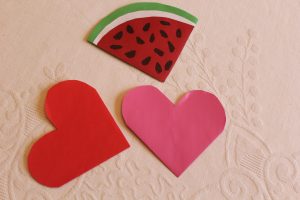

So I was thinking about bookmarks. I wanted something bright so it’s easily found, cheap so it’s not too sad if it goes missing, quick to make and clearly visible in the book. These book marks also have the advantage of being stored on the book, for instance slipped over the back cover, while you’re reading, so less chance of it being lost.
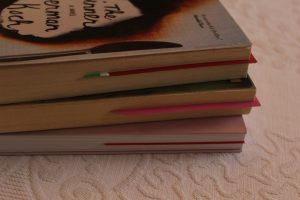

I save the coloured envelopes birthday cards come in as they’re such pretty colours. Of course, I don’t really have a use for them, so I had lots to choose from when I decided to make these bookmarks.
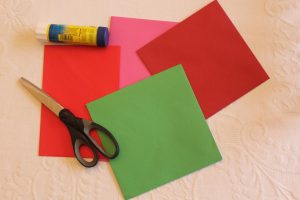

You need
- coloured envelopes or paper to fold and glue like the corner of envelope
- glue
- pencil and eraser
- scissors
- feltpen, Sharpie or similar if you’re making the slice of watermelon
For sheer simplicity I chose to make hearts and slices of watermelon. I’m planning to make these as little treats for the members of my bookclub and will use similar designs.
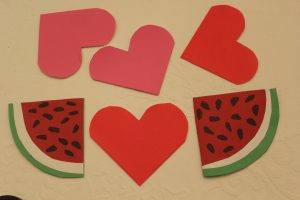

I drew half a heart shape on a folded piece of scrap paper and cut it out. Flattened it and traced it onto the corner of an envelope. Make sure it’s on the glued up corner, not the flap for sealing!
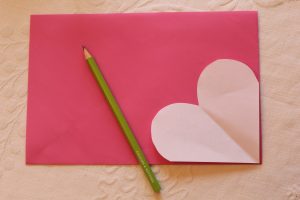

Cut on your pencil line, slip over the page of your book, close the book. Page saved by a secure and attractive bookmark.
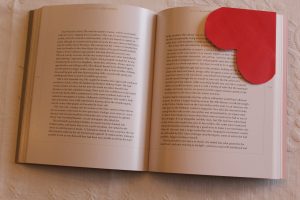

To make the slice of watermelon, cut a curved piece the size of your completed bookmark from scrap paper. Trace the curve onto the envelope and cut. Use the same scrap piece to cut a white piece and glue it onto the green base. Use the curved scrap again to cut a red piece and glue it on. I used a Sharpie to draw seeds randomly on the red part. Done!
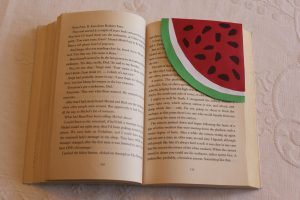

COOKING
After a brief but happy dalliance with bought rye bread, I “woke” up my starter/mother and made my own loaf. Not rye this time, apart from the starter. I used Premium White Bread Making flour simply because it was easier to get out of the cupboard where the bulk flours are stored!
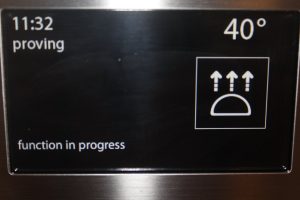

It was so cold the morning I began this process I knew the starter wouldn’t get bubbly and look puffy without artificial warmth. Usually I put it on the table and the sun coming through the French doors is enough to get it started. Not this morning! It was cold and bleak and there was no warmth in the sun. This is the first time I have used the PROVING setting on the oven. I was really pleased with how well the starter and then later the dough reacted to this setting.
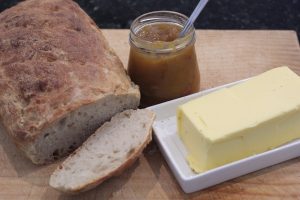

This is the white sourdough loaf I made and we enjoyed.
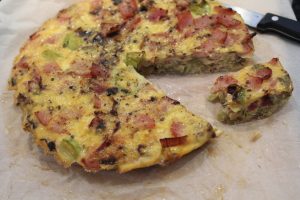

Also made an Egg and Bacon Pie. So easy and delicious. Brown 250gm of bacon in a pan with a splash of oil. Remove to a plate then brown a finely chopped leek. I had to add some extra oil to cook the leek. Spread this in a glass dish lined with baking paper. (So much easier to clean up!) Then whisk six large eggs until frothy, add 1/4 cup of water, or milk, whisk again. Pour over the bacon and leek. Grind some pepper over it. Put in 165° fan forced oven for 35 minutes, or until the middle is set. Serves 4-6. We like to eat it cold.
I have made this with bacon and mushroom and it is lovely, too. If I’m cutting it up for a picnic or sharing as part of a spread, I bake it in a square or rectangular dish.
GROWING


The white camellia suffered enormous damage three weeks ago when we had storms and heavy rain. The white flowers had brown marks around the edges of the petals and didn’t really open properly. Luckily, it’s blooming happily again. As a little boost I had watered a tray of ash in around the roots.


Each year my mother and I order tulips from the same grower. These are the last of my crop.
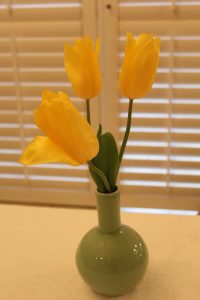

My Mother lives further south than us and her tulips are only just beginning to bloom.
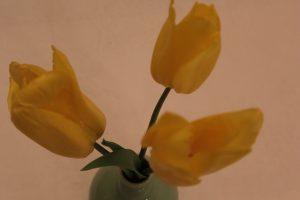

READING
A THEATRE FOR DREAMERS by Polly Samson
This is the imagined life of Australian author and columnist Charmain Clift and her husband, George Johnston during the time they spent living on Hydra during 1955-1964. They settled in cheap and sunny Hydra with their three children, where Clift scandalised the locals by wearing trousers and drinking in bars.
On the surface, they live an idyllic life. They attract other creative types, such as Canadian Leonard Cohen, who soon partners with the abandoned Norwegian, Marianne Ihlen. Racked with artistic doubts, rejections or requests for editing from publishers and criticism from other authors, this is a tense society.


Clift is the centre of the cosmopolitan society of international bohemians in Hydra, helping and compassionate and always resentful of time stolen from her own writing career, especially by her ill, heavy drinking husband, a once famous war correspondent. He later was best known for his book, My Brother Jack.
Focusing on the days before serious drug use was the norm in Hydra, this small community buzzed with sexual jealousies, alcohol and creative souls who often didn’t meet their own expectations. We learn a little about the extremely tolerant Greek population around them, but mostly, this story is told by a minor player, Erica, the daughter of Clift’s neighbour when she lived in London. She sets off for Hydra with her brother and her boyfriend when her mother dies and she receives a copy of Clift’s book, The Lotus Eaters.


This well researched book is an imagined account of the halcyon days in Hydra and I found it fascinating. It was from a time I didn’t really know, but about characters I did know of, and the descriptions of Hydra were enticing. I thought this was a great read and would recommend it.
The other book I have been reading is THE GIRL WHO READS ON THE METRO by Christine Foret-Fleury.
Reviews describe this book as a “gem”, a “joy” and a “delight”. Juliette, our main protagonist, leaves her dull job in a real estate agency and takes over the book business of a mysterious character. Her job is to follow strangers and observe their behaviour to decide the perfect book for them. Juliette believes in the power of books to change peoples’ live.

This whimsical book, part literary reference and part fairy tale was a quick and easy read and really didn’t have much of a story! I think the whole point was showing the power of the written word to change how people feel. The online reviews are mixed, but the book has been translated into English due to its popularity in France. You decide! I’ve gone back to reading an Australian murder series.
We’re still in PLASTIC FREE JULY so please consider ways you can reduce your use of plastics. Rebecca Prince-Ruiz, founder of Plastic Free July reminds us that only 9% of all plastics are recycled and only 0.9% are recycled more than once. Plastics don’t actually break down completely, they simply become smaller and smaller, but never disappear.
